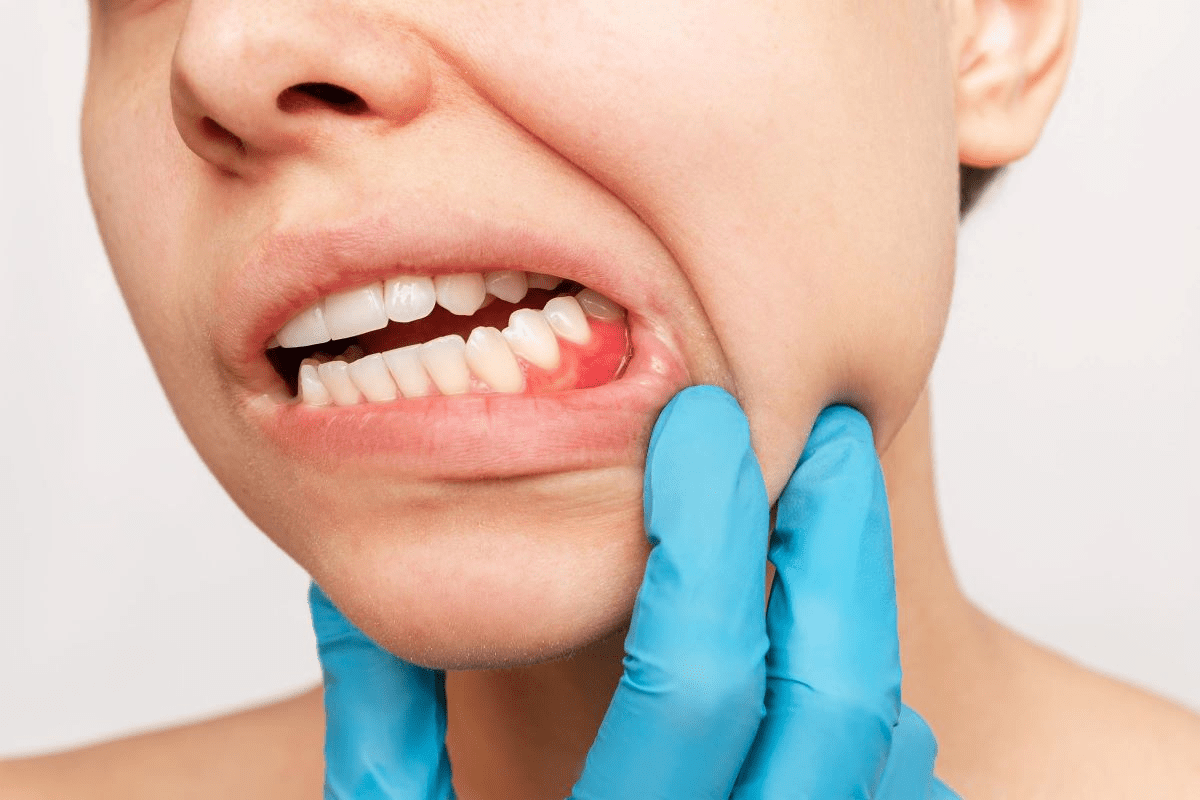Last Updated on October 31, 2025 by Saadet Demir

How long does pharyngitis last? Learn the typical duration for viral (5-7 days) versus bacterial (resolves quickly with antibiotics) infections.
Pharyngitis, or inflammation of the back of the throat, affects millions each year. Distinguishing between viral and bacterial causes is key for treatment. Most cases get better with care, but knowing the cause helps speed up recovery.
Liv Hospital’s diagnostic skills help find the cause of pharyngitis. This ensures patients get the right treatment. Most cases, 50-80%, are viral, and 5-36% are bacterial. Accurate diagnosis is vital to ease pain and prevent problems.

Pharyngitis is when the pharynx gets inflamed. This can happen due to viruses or bacteria. It causes throat pain and discomfort, making it a common reason for doctor visits. We’ll look into the causes, how common it is, and other key points about pharyngitis.
Pharyngitis means the pharynx, the throat area behind the mouth and nose, is inflamed. This can make swallowing hard and hurt. It can last a short time or keep coming back.
Throat pain usually comes from infections. These can be from viruses or bacteria. Viral infections like rhinovirus, influenza, and adenovirus are common. Bacterial infections, like those from Group A Streptococcus (GAS), also cause it, known as “strep throat.”
In the United States, pharyngitis affects people of all ages. Studies show most cases are viral. But, bacterial pharyngitis, like strep throat, is also a big part of it.
Cause | Prevalence |
Viral Infections | 60-80% |
Bacterial Infections (Strep Throat) | 5-15% |
Other Causes | 5-20% |

Knowing what viruses cause pharyngitis is key to treating it well. This condition affects millions, causing a lot of discomfort and disrupting daily life.
Rhinovirus is a top cause of viral pharyngitis, linked to the common cold. Symptoms include a sore throat, runny nose, and cough. It usually lasts 3 to 7 days, with some cases getting better without treatment.
Key Characteristics of Rhinovirus Infection:
Influenza virus is another big cause of viral pharyngitis, mainly during flu season. It can cause more serious symptoms like high fever, body aches, and severe throat pain. Symptoms usually last 5 to 7 days.
“Influenza virus infections can lead to severe complications, specially in vulnerable populations such as the elderly and young children.”
CDC
Adenovirus and coronavirus also cause viral pharyngitis. Adenovirus can cause mild to severe symptoms, including gastroenteritis. Coronavirus, known during the COVID-19 pandemic, can cause pharyngitis and other respiratory symptoms.
Viral Agent | Typical Duration of Pharyngitis | Common Symptoms |
Rhinovirus | 3-7 days | Sore throat, runny nose, cough |
Influenza Virus | 5-7 days | High fever, body aches, severe throat pain |
Adenovirus | Variable | Respiratory issues, gastroenteritis |
Coronavirus | Variable | Respiratory symptoms, fever, cough |
Other viruses, like respiratory syncytial virus (RSV) and enteroviruses, can also cause pharyngitis. These viruses can have different levels of severity and duration. They often need supportive care as part of treatment.
Understanding the viral causes of pharyngitis helps us manage symptoms better. It’s important to know that while some cases may get better on their own, others might need medical help to avoid complications.
It’s important to know what causes bacterial pharyngitis. This condition can be very uncomfortable. It’s caused by different types of bacteria.
Group A Streptococcus (GAS) is the main cause of bacterial pharyngitis. This is also known as strep throat. Strep throat causes severe throat pain, fever, and swollen lymph nodes. Doctors can test for GAS with rapid tests or throat cultures.
We will look at the effects of GAS infections and why accurate diagnosis is key later on.
While GAS is the most common cause, other bacteria can also cause pharyngitis. These include:
Some factors make you more likely to get bacterial pharyngitis. These include:
Risk Factor | Description |
Age | Children and young adults are more commonly affected. |
Exposure | Being close to someone who is sick, like in schools or homes. |
Seasonality | Bacterial pharyngitis can happen anytime, but some bacteria are more common in certain seasons. |
Knowing these risk factors and the causes of bacterial pharyngitis helps doctors treat it better.
Knowing how long pharyngitis lasts is key to managing your recovery. Pharyngitis is an inflammation of the pharynx. It can be caused by viruses or bacteria, and its length varies.
The typical timeline for pharyngitis can help you know what to expect. Viral pharyngitis usually lasts 3 to 7 days. Bacterial pharyngitis can last 7 to 10 days if not treated. This time can change based on your health and immune response.
Several things can affect how long pharyngitis lasts. These include:
People with weak immune systems may take longer to get better.
Expect relief from sore throat symptoms in a few days with the right treatment. For viral pharyngitis, symptoms start to get better in 3 to 5 days. For bacterial pharyngitis, antibiotics can help a lot in 24 to 48 hours. But, it’s important to finish all antibiotics to clear the infection.
Type of Pharyngitis | Typical Duration | Effect of Treatment |
Viral Pharyngitis | 3-7 days | Supportive care; symptoms improve within 3-5 days |
Bacterial Pharyngitis | 7-10 days (untreated) | Antibiotics; significant improvement within 24-48 hours |
The time it takes for pharyngitis to heal can differ a lot. This depends on if it’s caused by a virus or bacteria. Knowing these differences helps in planning the right treatment and what patients can expect.
Viral pharyngitis usually lasts from 3 to 7 days. Symptoms can be mild or severe. They often get better with just supportive care.
“Most cases of viral pharyngitis are self-limiting and resolve within a week without specific treatment.”
Source: Medical Guidelines
Bacterial pharyngitis, like that caused by Group A Streptococcus (GAS), can last longer. It can go on for 7 to 10 days without treatment. It’s important to treat it quickly to avoid serious problems.
Type of Pharyngitis | Typical Duration Untreated | Duration with Treatment |
Viral Pharyngitis | 3-7 days | 3-7 days (supportive care) |
Bacterial Pharyngitis | 7-10 days | 3-5 days (antibiotics) |
Antibiotics don’t help viral pharyngitis. But, they can greatly help bacterial pharyngitis. They shorten the time symptoms last and lower the chance of serious issues.
Pharyngitis symptoms follow a timeline from start to finish. Knowing this can help patients plan and seek care when needed.
The start of pharyngitis often brings a scratchy or sore throat. You might also feel fever, headache, and tiredness. These early signs can be more severe in bacterial cases.
Symptoms of pharyngitis usually hit their peak between days 3 to 5. Your sore throat will be at its worst, and fever and swollen lymph nodes might be more noticeable. Drinking lots of water and resting are key to recovery during this time.
After symptoms peak, most people start to feel better in 7 to 10 days. The sore throat will get better, and other symptoms will fade. But, how long it takes can depend on the cause and treatment.
Even after symptoms go away, some effects can last. You might have a mild sore throat or a cough. Usually, these effects are short-lived. But, if they don’t go away, seeing a doctor is a good idea.
Figuring out if pharyngitis is viral or bacterial is key for the right treatment. We’ll look at the main signs that tell us which one it is.
A cough can tell us a lot. Usually, a cough points to viral pharyngitis.
A dry cough often means it’s viral. But, strep throat, a bacterial infection, doesn’t usually have a cough. This helps doctors figure out what’s causing it.
Other signs can also help tell viral from bacterial pharyngitis. For example, viral infections might also cause a runny nose, sneezing, or eye infections.
Knowing when to get tested is important. If symptoms don’t go away or are very bad, seeing a doctor is a must. They can find out what’s wrong and how to treat it.
Symptom | Viral Pharyngitis | Bacterial Pharyngitis |
Cough | Often present, may be dry | Typically absent |
Additional Symptoms | Runny nose, sneezing, conjunctivitis | High fever, swollen lymph nodes |
Duration | Usually 3-7 days | Can last 7-10 days if untreated |
Understanding these signs helps doctors decide what’s causing pharyngitis. They can then choose the best treatment.
Managing pharyngitis depends a lot on the treatment used. The approach changes based on whether it’s caused by a virus or bacteria.
For viral pharyngitis, supportive care is key. This means resting, drinking plenty of water, and using over-the-counter meds for pain and fever. Gargling with salt water and using a humidifier can also help soothe the throat.
Key Supportive Care Measures:
For bacterial pharyngitis, like strep throat, antibiotics are needed. They help shorten the illness and prevent serious problems.
Antibiotic Treatment Considerations:
Proper treatment can greatly shorten pharyngitis duration. Viral cases usually clear up in 3-7 days with supportive care. Bacterial cases treated with antibiotics see improvement in 24-48 hours. After 24 hours of antibiotics, they’re no longer contagious.
Treatment Type | Typical Duration | Time to Symptom Improvement |
Supportive Care (Viral) | 3-7 days | Variable, often gradual |
Antibiotic Therapy (Bacterial) | 7-10 days (full course) | 24-48 hours |
Knowing the right treatment for viral or bacterial pharyngitis helps manage symptoms and shortens illness time. Always talk to a healthcare professional to find the best treatment plan.
To prevent pharyngitis, it’s key to boost your immune system and lower infection risk. We’ll look at ways to manage and prevent recurrent pharyngitis. This includes hygiene, lifestyle changes, and immune support.
Preventing pharyngitis requires a few steps. Good hygiene practices are essential, like washing hands often, mainly during cold and flu seasons. Also, staying away from people who are sick can stop infections from spreading.
For bacterial infections like strep throat, antibiotic therapy can help lessen symptoms. But, antibiotics don’t work on viral infections. In those cases, supportive care is the main treatment.
Lifestyle choices greatly impact recovery from pharyngitis. Staying hydrated by drinking lots of water can soothe the throat and thin mucus. Also, getting enough rest helps the body fight off the infection better.
Avoiding irritants like smoke and pollutants can also help recovery by reducing throat irritation. Eating a healthy diet full of fruits, vegetables, and whole grains boosts immune function.
For those with recurrent or chronic pharyngitis, finding the cause is key. Chronic exposure to irritants, allergies, or health issues can lead to frequent pharyngitis.
Managing chronic pharyngitis might mean making lifestyle changes and treating any underlying conditions. Talking to a healthcare provider can help figure out the best plan.
Seasonal changes can weaken the immune system, making infections harder to fight. Boosting immune support through a balanced diet, regular exercise, and enough sleep can help.
Also, supplements like vitamin C and zinc can offer extra immune support. But, it’s wise to talk to a healthcare provider before starting any new supplements.
Understanding pharyngitis is key to managing it well. We’ve looked at what causes it, how long it lasts, and how to treat it. Knowing the difference between viral and bacterial pharyngitis helps set realistic recovery goals.
Recovery times vary. Viral cases usually get better in 3-7 days, while bacterial cases take 7-10 days without treatment. Antibiotics can shorten the time for bacterial cases. Rest, staying hydrated, and managing pain are also important for feeling better.
Setting the right expectations for recovery means knowing how to diagnose and treat pharyngitis. Living a healthy lifestyle and getting medical help when needed can prevent complications. We stress the need for complete care to help pharyngitis patients get better.
Pharyngitis can last from 3 to 10 days. This depends on if it’s viral or bacterial. Viral infections usually last 3 to 7 days. Bacterial infections can last up to 10 days without treatment.
Viral pharyngitis is caused by viruses like rhinovirus and adenovirus. Bacterial pharyngitis is usually caused by Group A Streptococcus. A cough is more common with viral infections.
Viral pharyngitis usually goes away in 3 to 7 days. You can manage symptoms with rest, hydration, and pain relievers.
Without treatment, bacterial pharyngitis can last 7 to 10 days. Antibiotics can make symptoms better in 24 to 48 hours.
Yes, a cough can happen with pharyngitis, often with viral infections. This can help tell if it’s viral or bacterial.
Look for signs like cough, fever, and white tonsil patches. A throat swab test can confirm the cause.
Treatment varies by cause. Viral infections are managed with rest and hydration. Bacterial infections need antibiotics.
Prevent it by washing hands often, avoiding sick people, and staying healthy. A strong immune system helps too.
Yes, it can come back if the cause isn’t fully treated. Managing chronic cases involves lifestyle changes and immune support.
Bacterial pharyngitis gets better in 24 to 48 hours with treatment. Viral cases resolve in 3 to 7 days with care.
Recovery is better with rest, hydration, and good nutrition. Avoiding smoke and pollutants also helps.
Eat well, exercise, and get enough sleep to boost your immune system. This is key during seasonal changes.
National Center for Biotechnology Information. (2025). How Long Does Pharyngitis Last Viral vs Bacterial. Retrieved from https://www.ncbi.nlm.nih.gov/books/NBK559007/
Subscribe to our e-newsletter to stay informed about the latest innovations in the world of health and exclusive offers!
WhatsApp us